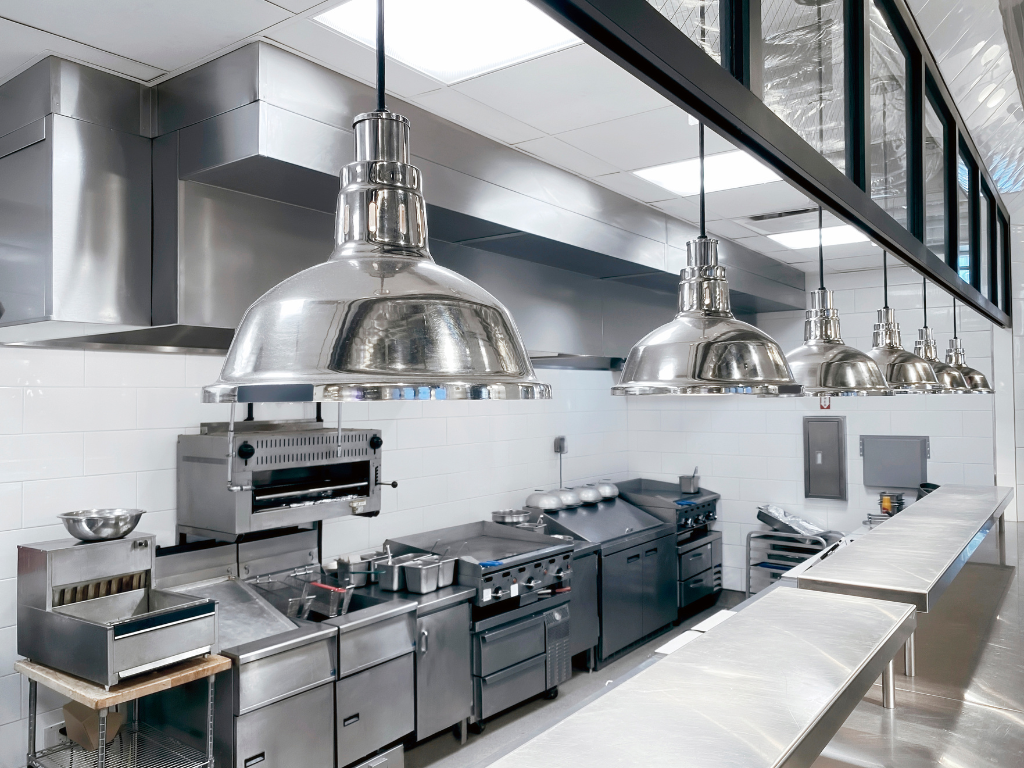 Operating a food establishment requires careful consideration of the kitchen equipment that will be used. However, striking a balance between cost and quality is essential. This article offers an in-depth look at the advantages and drawbacks of investing in various types of commercial kitchen equipment.
Operating a food establishment requires careful consideration of the kitchen equipment that will be used. However, striking a balance between cost and quality is essential. This article offers an in-depth look at the advantages and drawbacks of investing in various types of commercial kitchen equipment.
Quality Meets Cost
At the heart of any establishment is the kitchen. The right equipment can help operations run smoothly, boosting productivity and even profits. The inclusion of appliances such as commercial ovens, commercial mixers, commercial ice machines, commercial deep fryer, and even specialised ones like commercial rice cookers and crepe makers can elevate the services offered. Conversely, overlooking the quality and suitability of your commercial kitchen equipment can hamper the efficiency of your operations.
Specialized Commercial Kitchen Equipment for Varied Needs
For coffee shops, the quality and efficiency of coffee machines can drastically affect customer satisfaction. A quality machine ensures the consistency of every cup brewed. Furthermore, a high-quality Electrolux or Hobart dishwasher is crucial in maintaining the cleanliness of your utensils and dishes.
In the baking industry, the need for specific bakery equipment like commercial ovens and mixers is paramount. The performance of these pieces of equipment directly influences the quality of your products. Similarly, food establishments that handle a lot of fresh produce and perishables benefit greatly from investing in a top-notch commercial refrigerator or a commercial chest freezer.
Pros and Cons of Commercial Kitchen Equipment
While there are clear advantages, investing in commercial kitchen equipment also comes with certain drawbacks. The primary advantage is the enhanced productivity resulting from using high-performing machines. For instance, using a commercial dishwasher such as Meiko or Electrolux means dishes get cleaned faster and more efficiently than with standard models.
A secondary advantage is durability. Commercial kitchen equipment like commercial fridges, commercial ice maker, and commercial bar fridges are built to withstand the high demands of a busy kitchen, often leading to less frequent breakdowns and longer life spans.
However, the initial costs of such equipment can be high, particularly for top brands. Moreover, maintenance costs and energy consumption may be greater compared to domestic appliances. Nevertheless, given the operational efficiencies and potential profits, the cost may well be justified.
Making the Right Decision
Your choice of commercial kitchen equipment should be based on a careful assessment of your establishment’s needs and budget. Consider the potential benefits and savings against the initial outlay and ongoing expenses. Ultimately, the best investment is one that balances cost, quality, and the specific needs of your business.
Remember, running a successful food establishment is more than having a commercial kitchen filled with the latest equipment. It’s about having the right tools that offer the best value, can withstand the test of time, and can contribute to delivering quality service and products to your customers.
What is the average cost of commercial kitchen equipment?
Commercial kitchen equipment varies significantly in price depending on the item. For instance, a commercial oven can range between $1,000 to $10,000. On the other hand, commercial dishwashers such as Electrolux or Hobart can cost between $3,000 and $10,000. Overall, outfitting a commercial kitchen may require a significant initial investment, potentially amounting to $100,000 or more.
Why is commercial kitchen equipment so expensive?
Commercial kitchen equipment is more costly than residential equipment due to its larger size, increased durability, and the capacity to handle high volumes of food production. Despite the initial cost, these units are designed for longevity and to withstand the demanding environment of a bustling commercial kitchen.
Are there financing options available for commercial kitchen equipment?
Indeed, many suppliers offer financing options to make commercial kitchen equipment more accessible. This could include lease-to-own programs or monthly payment schemes with interest rates typically ranging between 5-20%.
Does investing in energy-efficient equipment save money?
While energy-efficient equipment might have a higher upfront cost, the long-term savings can be substantial. These appliances use less power, which could decrease utility costs by up to 30%. Moreover, certain energy-efficient appliances may qualify for tax credits or rebates, offering further financial benefits.
Is it more cost-effective to repair or replace commercial kitchen equipment?
The decision to repair or replace equipment depends on various factors, such as the age and condition of the equipment, the cost of the repair, and the potential savings from a newer, possibly more energy-efficient model. Repairing a piece of equipment might cost anywhere from $200 to $2,000 or more, but a new, efficient model could save hundreds of dollars each year in energy costs.

Awesome articles and i read your all blogs.